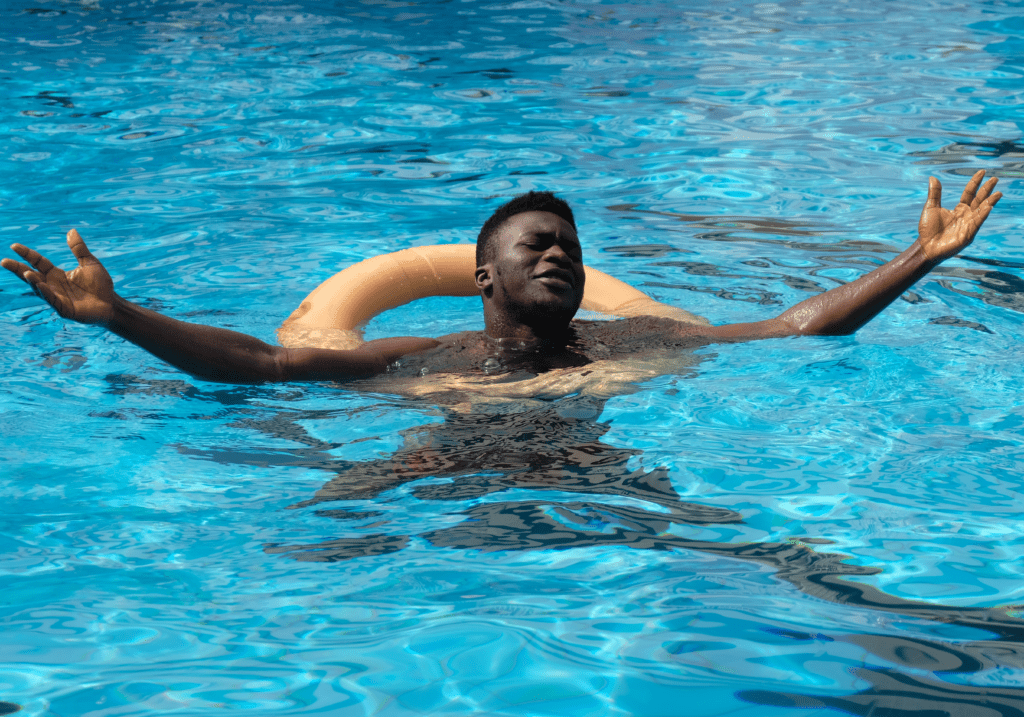Photo by Angela Roma/Pexels
By Mayo Staff, Mayo Foundation for Medical Education and Research
DEAR MAYO CLINIC: I swim for exercise and relaxation. I try to get in the pool about three times a week. Recently, I have begun to have episodes where it feels like water is still in my ear. Then my ear becomes red and painful. A friend suggested I might have swimmer’s ear. Is this something that is easy to treat? Do I need to stop swimming?
ANSWER: Swimmer’s ear is an infection in the outer ear canal, which runs from your eardrum to the outside of your head. It’s often brought on by water that remains in your ear, creating a moist environment that aids the growth of bacteria.
Swimmer’s ear also is known as otitis externa, and it can affect people of any age. And it can affect those who do not spend time in the water, since it occurs because of bacteria invading the skin inside the ear canal. Excess moisture in the ear from heavy perspiration or pro-longed humid weather also can be a culprit.
Scratches or abrasions in the ear canal increase the risk of developing otitis externa. Putting fingers, cotton swabs or other objects in the ears, such as earbuds or hearing aids, also can lead to this infection by damaging the thin layer of skin lining the ear canal. Any small breaks in the skin can allow bacteria to grow.
Being aware of the risk for the condition and prompt treatment can prevent complications and other, more serious issues. Typically, you can treat swimmer’s ear with ear drops. Recurrent infections may require additional treatment.
Common signs of swimmer’s ear are what you described: redness and mild discomfort that worsens when the ear is pulled or pushed.

Photo by Dennis Irorere/Unsplash
Occasionally, people have itching in the ear canal as well as some drainage of clear, odorless fluid. Swimmer’s ear symptoms are usually mild at first, but they can worsen if the infection isn’t treated or spreads. It is important to be aware if you begin to experience a feeling of fullness in your ears, increased pain or more intense itching, or begin to have hearing complications. The infection may be progressing. However, temporary hearing loss could occur until the infection clears. Follow these tips to avoid swimmer’s ear:
Keep ears dry. After swimming or bathing, dry your ears by wiping the outer portion gently with a soft towel or cloth. Tip your head to the side to help water drain from the ear canal. You also can use a hair dryer on the lowest setting, holding it at least a foot away from the ear.
Use a preventive treatment. As long as you do not have punctured eardrums, you can use homemade preventive eardrops before and after swimming to help reduce the risk for swimmer’s ear. A mixture of one-part white vinegar to one part rubbing alcohol can promote drying and prevent the growth of bacteria and fungi that can cause swimmer’s ear. Pour 1 teaspoon of the solution into each ear and let it drain back out. Similar over-the-counter solutions might be available at your drugstore. Additionally, consider wearing earplugs while swimming.
Avoid putting foreign objects in the ear. Cotton swabs can pack material deeper into the ear canal, irritate the thin skin inside the ear or break the skin. If you are trying to clean the ear and remove wax, do so without using cotton swabs or other instruments.
Protect ears from irritants. Putting cotton balls in the ears while applying products such as hair sprays and hair dyes can reduce risk of bacteria getting into the ear canal.
Since you have not been diagnosed with swimmer’s ear, it would be helpful to talk with your primary health care professional to confirm the condition and provide the proper treatment. You should not have to give up swimming for exercise, but you may need to take a temporary break from the pool for a few days. Your health care team can offer guidance on when to return to the water. — Compiled by Mayo Clinic staff
Mayo Clinic Q & A is an educational resource and doesn’t replace regular medical care. E-mail a question to MayoClinicQ&A@mayo.edu. For more information, visit www.mayoclinic.org.
(C)2022 Mayo Foundation for Medical Education and Research. All rights reserved. Distributed by Tribune Content Agency, LLC.




